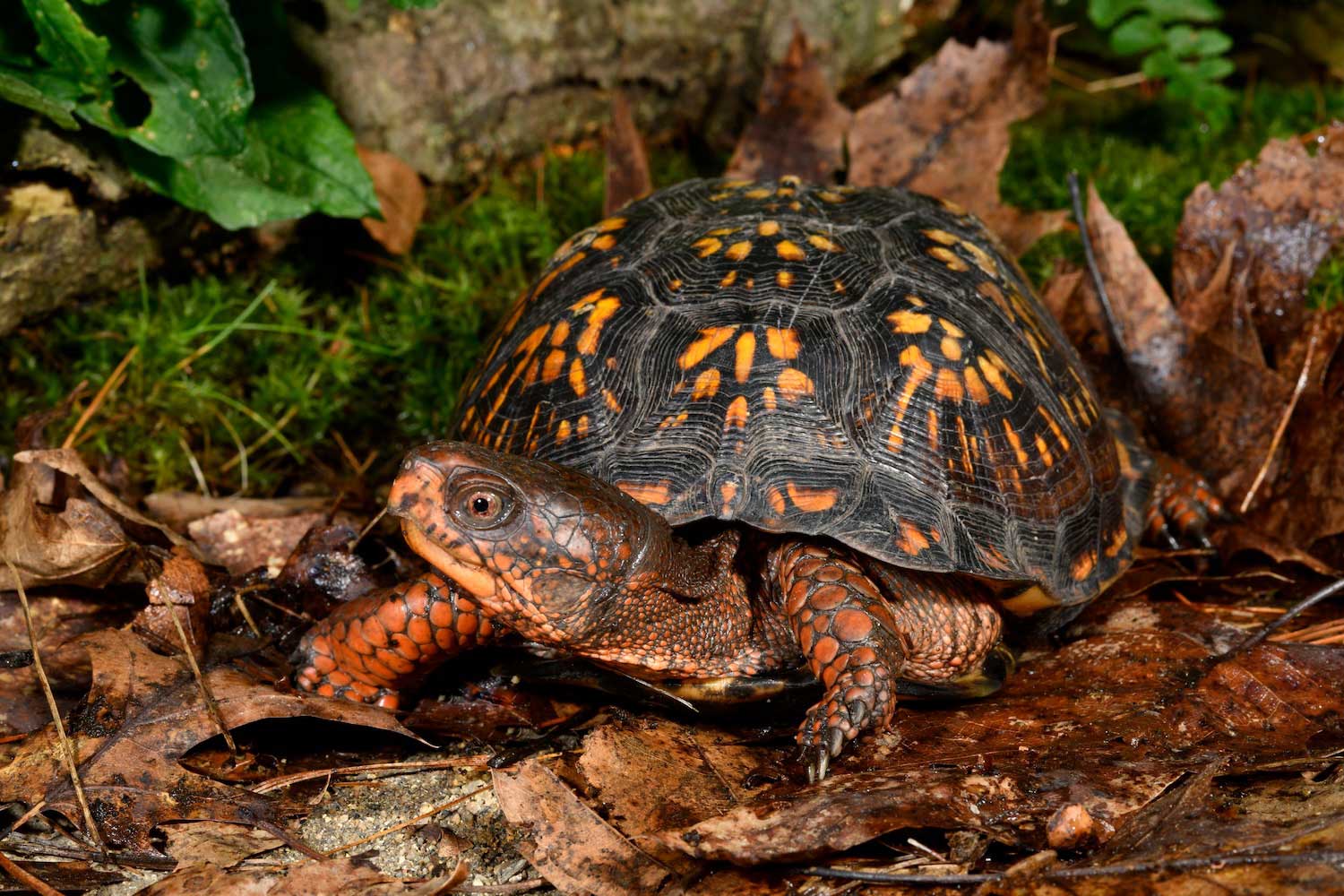Not all turtles love water. Box turtles thrive on land

When you think of turtles, certain things come to mind. Their hard, protective shells most likely, and probably the slow pace at which they move about their environment. And maybe you think about water too. That is, after all, where we see turtles, either swimming in or basking near the water.
Not all turtles though are as fond of water as the red-eared sliders, painted turtles and snapping turtles that are local to our area. Two local turtle species — the eastern box turtle and the ornate box turtle — are instead partial to land, and where they are most commonly seen may surprise you.
Eastern box turtles are likely to be seen roaming through forests and along forest edges, while ornate box turtles prefer prairies, in particular prairies with sandy soils, according to the Illinois Natural History Survey.
While box turtles are adept at life on land, they do still spend time in the water. That's part of what makes them turtles instead of tortoises. They will enter shallow waters during hot, dry weather, and they hunt for food in water, according to the Alabama Wildlife Federation. They also soak their shells in water.
These two turtle species both have domed upper shells, called carapaces. They are called box turtles because of their ability to close up their shells like a box, according to the Purdue University Extension. The underside of their shell, called the plastron, has hinges at the front and back that allow the turtles to pull in their heads, legs and tail and close the shell so they can't be reached inside. It is thought that box turtles probably evolved this adaptation to allow them to protect themselves from predators like opossums and raccoons that are adept at digging into their shell openings.
You aren't likely to confuse eastern box turtles and ornate box turtles because of their habitat, but they can also be differentiated based on appearance. Both have dark-colored shells, but eastern box turtles have variable yellow or orangish splotches as markings while ornate box turtles have yellow lines that radiate from the center of their shells.
Among both box turtle species, you can also differentiate between the male and female turtles based on their eye color. The male box turtles have red eyes, while the eyes of the female turtles are brown, the Illinois Natural History Survey reports. Another difference between males and females can be seen on their plastrons, or bottom shells. While females have flat plastrons, the males' are concave.
The diet of the two turtles varies, with ornate box turtles being mostly carnivorous, eating mainly insects, worms, snails, tadpoles and bird eggs along with some vegetation, the Illinois Natural History Survey reports. Conversely, eastern box turtles primarily eat fungi and berries but also eat invertebrates like insects, snails, slugs and worms.
Like other turtles, box turtles are inactive in the winter, entering a state of brumation, which is similar to hibernation. During brumation, turtles remain inactive, but they may wake from time to time to drink water before returning to an inactive state, the Illinois Department of Natural Resources reports. Eastern box turtles typically brumate in loose soil or at the bottom of a pond. They enter brumation in late October or early November and will remain inactive until spring. Ornate box turtles brumate in similar environments, but their brumation period is a little longer than eastern box turtles. They usually enter brumation two weeks earlier and emerge two weeks later than eastern box turtles.
Neither box turtle species is common across its range, but the ornate box turtle is listed as a threatened species in Illinois, according to the Illinois Department of Natural Resources. The Forest Preserve monitors the preserves for box turtles, and some ornate box turtles are tracked to monitor their nesting activity.
If you want to get an up-close look at a box turtle, visit the Forest Preserve's Plum Creek Nature Center in Crete Township near Beecher. The nature center has several animal ambassadors that visitors can see and learn about, including a box turtle named Lilo.
